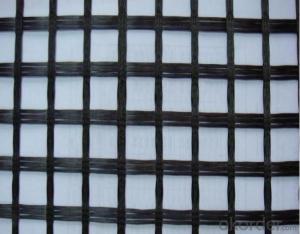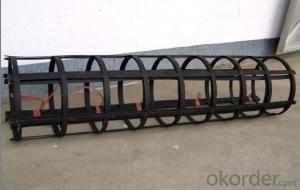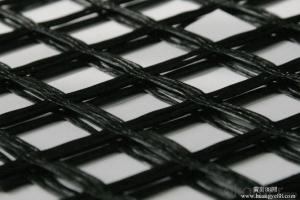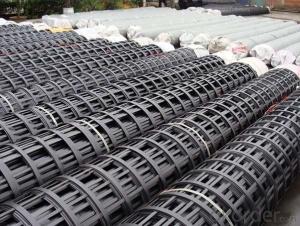Interlock Plastic Biaxial Geogrids / Polypropylene Geogrids
- Loading Port:
- Tianjin
- Payment Terms:
- TT OR LC
- Min Order Qty:
- 500 m²
- Supply Capability:
- 100000 m²/month
OKorder Service Pledge
OKorder Financial Service
You Might Also Like
Applications:
Make reinforce treatment for various kinds of soft soil foundation to evenly distribute load stress and reduce uneven settlement, not easy to generate static electricity, and flammability property good in the coal mine. It is easy to wash coal.
Used in highway, railway, port, airport and municipal project. Support in the recovery working face of coal mine and roadway in the coal mine.
Index Properties | Test Method | Unit | GG1515 | GG2020 | GG3030 | GG4040 |
MD TD | MD TD | MD TD | MD TD | |||
Polymer | -- | -- | PP | PP | PP | PP |
Minimum Carbon Black | ASTM D 4218 | % | 2 | 2 | 2 | 2 |
Tensile Strength@ 2% Strain | ASTM D 6637 | Kn/m | 5 5 | 7 7 | 10.5 10.5 | 14 14 |
Tensile Strength@ 5% Strain | ASTM D 6637 | Kn/m | 7 7 | 14 14 | 21 21 | 28 28 |
Ultimate Tensile Strength | ASTM D 6637 | Kn/m | 15 15 | 20 20 | 30 30 | 40 40 |
Strain @ Ultimate Strength | ASTM D 6637 | % | 13 10 | 13 10 | 13 10 | 13 10 |
Structural Integrity | ||||||
Junction Efficiency | GRI GG2 | % | 93 | 93 | 93 | 93 |
Flexural Rigidity | ASTM D 1388 | Mg-cm | 700000 | 1000000 | 3500000 | 10000000 |
Aperture Stability | COE Method | mm-N/deg | 646 | 707 | 1432 | 2104 |
Dimensions | ||||||
Roll Width | -- | M | 3.95 | 3.95 | 3.95 | 3.95 |
Roll Length | -- | M | 50 | 50 | 50 | 50 |
Roll Weight | -- | Kg | 39 | 50 | 72 | 105 |
MD denotes Machine direction. TD denotes transverse direction. | ||||||

| Packaging Details: | according to your need |
| Delivery Detail: | 7days |






FAQ
Q:Can you provide a sample for us?
A:Yes,We can send free samples,but customer need to pay the freight.
Q:What is your minimum order quantity?
A:The minimum order is negotiable.
Q:What is your payment terms?
A: T/T or L/C
Q: What is your delivery time?
A:Production time usually cost 7-15 days.
Q: Why we choose you?
We have up to 15 years experience of geogrid manufacture. best quality of product is guaranteed!
- Q: What is a geogrid?
- A geogrid is a type of geosynthetic material made of polymer or fiberglass that is used to reinforce soil or other materials in civil engineering projects. It is commonly used to increase the strength and stability of retaining walls, slopes, and roadways by distributing the load and preventing soil movement.
- Q: How do geogrids help in reducing construction labor requirements?
- Geogrids help in reducing construction labor requirements by providing reinforcement and stability to the soil, which eliminates the need for excessive excavation, backfilling, and compaction. This saves time and effort for the construction workers, as geogrids can bear heavy loads and prevent soil movement, reducing the need for extensive manual labor.
- Q: way grille HS codingAlso do not know what is the basis of the grid HS code pointsAlas! !Thanks in advance!!!Hard, can you tell me how much is the tax rebate rate? Thank you
- 39173900 porous high strength grid type communication casing39259000 round bar profile pultruded glass fiber reinforced plastic grille
- Q: How do geogrids improve the performance of mechanically stabilized slopes in clayey soils?
- Geogrids improve the performance of mechanically stabilized slopes in clayey soils by providing reinforcement and enhancing the overall stability of the slope. The geogrids act as a tension element, distributing the tensile forces and reducing the potential for slope failure. They increase the shear strength of the soil, preventing excessive movement and reducing the risk of slope deformation. Additionally, geogrids help to control the lateral spreading of the soil by confining it within the reinforced zone, thereby improving the overall performance and longevity of the slope in clayey soils.
- Q: What is the ultimate tensile strength of geogrid?Ask you
- Followed by the warp mesh, plastic grille (warp mesh elongation rate as raw material has a larger range of changes, some may be smaller than the plastic grille), glass fiber grille
- Q: What is the tgsg15-15 geogrid
- Plastic geogrid with high strength steel wire (or other fiber), through special processing, and polyethylene (PE), and adding other additives by extrusion become composite high strength tensile band, and surface roughness is embossed, high strength reinforced Geotextile
- Q: What is the lowest price of two-way plastic geogrid?
- The cheapest non-standard 15KN the cheapest price of 2.1 this is the factory with the tax price, the general amount of words, you can also be cheaper
- Q: Definition of GeotextilesWhat are what material, what role
- The nonwoven geotextile is composed of at least two sets of parallel yarns (or flat), along with a group of loom (fabric longitudinal direction) called warp, another group called weft. Lateral arrangement with different preparation of weaving equipment and process of warp and weft interwoven with woven cloth like. According to the different scope woven into different thickness and density, generally the nonwoven geotextile thin longitudinal tensile strength is very strong (latitude, longitude is greater than) has good stability properties. The nonwoven geotextile according to the knitting technology and use the latitude is divided into different geosynthetic cloth and reinforced geotextile two categories, reinforced geotextile warp tensile strength is far greater than the ordinary geotextile. The nonwoven geotextile general application and geotechnical engineering project reinforcement, the main function is reinforced, with planar isolation and protection function, not out The plane drainage function can be selected according to the specific purpose
- Q: Can geogrids be used in temporary construction platforms?
- Yes, geogrids can be used in temporary construction platforms. Geogrids provide structural reinforcement and stabilization to the soil, making them suitable for supporting heavy loads and providing a stable working surface during temporary construction projects.
- Q: What are the factors that affect the installation and survivability of geogrids in cold climates?
- The factors that affect the installation and survivability of geogrids in cold climates include the type and quality of geogrid material, proper preparation of the subgrade, adequate compaction of the soil, temperature variations, frost heave, snow accumulation, and freeze-thaw cycles.
Send your message to us
Interlock Plastic Biaxial Geogrids / Polypropylene Geogrids
- Loading Port:
- Tianjin
- Payment Terms:
- TT OR LC
- Min Order Qty:
- 500 m²
- Supply Capability:
- 100000 m²/month
OKorder Service Pledge
OKorder Financial Service
Similar products
Hot products
Hot Searches
Related keywords


































